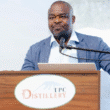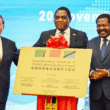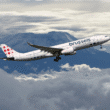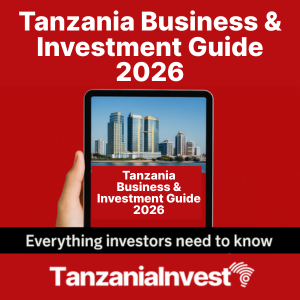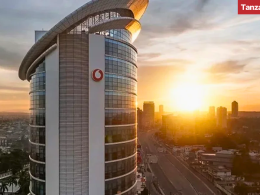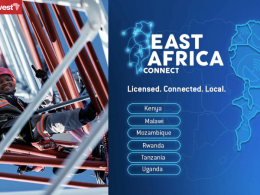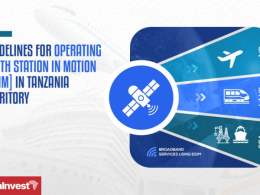Telecommunications in Tanzania include fixed and mobile voice services, Internet, television, and radio. The sector contributed 2.1% to the country’s GDP in 2014, with USD1b, compared to USD513m in 2009 (+100%).
Tanzania’s National Bureau of Statistics (NBS) attributes the growth rate to an increase in airtime used by mobile phone customers and the expansion of broadcasting and internet services.
In the past 5 years, mobile subscriptions rose by 89%, from 21m in 2010 to almost 40m in 2015 while landline subscriptions decreased by 22%, from 174,511 in 2010 to 142,819, with a teledensity of 79%.
Internet services’ users in Tanzania reached 17.3m in 2015, compared to only 5.3m in 2011.
Table of Contents
Tanzania Telecoms History
Tanzania Converged Licensing Framework (CLF)
Tanzania Telecoms Performances
Tanzania Voice Subscriptions
Tanzania Mobile Voice Subscriptions
Tanzania Landline Voice Subscriptions
Tanzania Internet Services
Tanzania Fibre Optic Cable Network
Tanzania Mobile Internet Network: 4G/3G/2G Services
Tanzania Telecom Inclusion
Tanzania Mobile Sector Taxation
TV Broadcasting Services in Tanzania
Radio Broadcasting Services in Tanzania
Tanzania Telecoms Outlook
Tanzania Telecoms History
Before 1993, the Tanzania Posts and Telecommunications Corporation (TPTC) held a monopoly in the provision of communications and was responsible for the regulation of this sector.
In 1993, the Communications Act was enacted as part of the government’s move to liberalize the communications sector in the country.
Since then, the TPTC was split into 3 different entities: the Tanzania Posts Corporation (TPC), the Tanzania Telecommunications Company Limited (TTCL) and the Tanzania Communication Commission (TCC).
Additionally, the Tanzania Broadcasting Commission (TBC) was established with Tanzania’s Broadcasting Act of 1993.
The main functions of TBC were: issuing broadcasting licenses, regulating and supervising broadcasting activities and maintaining a register of all broadcasters.
To foster convergence of technology and services, TCC and TBC were merged in 2003, to form the Tanzania Communications Regulatory Authority (TCRA).
TCRA regulates telecommunications, broadcasting and postal matters in Tanzania, promotes effective competition and economic efficiency, protects the interests of consumers, regulates rates and tariffs, and monitors the performance of the sector.
TCRA approved in 2005 a new Converged Licensing Framework (CLF), a pioneering move in the African continent, which allows operators to offer any type of services with the technology of their choice with one single license.
Today, the Information and Communication Technologies (ICTs) sector in Tanzania is completely liberalized and competition has grown in mobile cellular services, internet and data communications services.
On 23 February 2005, TCRA introduced the CLF to ensure regulatory flexibility, address market and technology developments and efficient utilization of network resources, and encourages market entry of small scale operators.
The CLF of Tanzania establishes 4 categories of licenses:
- Network Facilities Providers (NF)
- Network Service Providers (NS)
- Application Service Providers (AS)
- Content Service Providers (CS)
The 4 categories of licenses are further divided into 4 geographic market segments:
- international
- national
- regional
- district
The licensing regime provides separate licenses for infrastructure and for services. In the previous regime services, including internet provision were licensed individually.
The CLF allows content service providers who do not own their own transmission facilities (network facilities) to deliver broadcasting services using licensed network facility operators.
According to TCRA, the CLF has been a catalyst in the development of communication network infrastructure, network services, applications and content (radio and broadcasting).
Tanzania Telecoms Performances
Tanzania is the second largest telecoms market in East Africa behind Kenya with a penetration of 79% of the total population in 2015, with 40m users.
Tanzania Voice Subscriptions
Tanzania teledensity has reached 79% in 2015, for which mobile voice subscriptions account for the greatest part.
Tanzania Mobile Voice Subscriptions
In the past 5 years, mobile subscriptions rose by 89%, from 21m in 2010 to almost 40m in 2015.
There are 8 mobile network operators (MNOs) in Tanzania: Airtel, Smart, Smile, Halotel, Tigo, TTCL, Vodacom, and Zantel.
The latest MNO to enter Tanzanian was Halotel in October 2015. The company has invested over USD1b in the country and plans to cover 90% of Tanzania’s population with 3G services by the end of 2016.
Tanzania Landline Voice Subscriptions
In the past 5 years, landline subscriptions decreased by 22%, from 174,511 in 2010 to 142,819 in 2015.
There are only two fixed line network operators (FNO) in Tanzania: state-owned Tanzania Telecommunication Company Limited (TTCL), the oldest and largest, which owns and operates the public switched telephone network, and Zantel, which uses wireless technology.
TTCL was partially privatized in 2001 when Bharti Airtel acquired a 35% stake in the company as part of a USD 10.7 billion pan-Africa deal in 2010.
However, in June 2016 the Tanzanian government signed a Memorandum of Understanding (MoU) with Bharti Airtel to buy back its 35% stake in TTCL. The sale was concluded and the company returned to being entirely state-owned.
Tanzania Internet Services
Internet services have been available in Tanzania since 1995, but there was no international fiber connectivity available until 2009, when SEACOM submarine fiber cable was implemented.
Before then, internet was obtained via satellite networks. Current operators include: TS2, Businesscomm, Spicenet, OneWeb, SpaceX, Juch-Tech, Zanlink.
To date, the following submarine fiber cables connect Tanzania to the internet:
- SEACOM/Tata TGN-Eurasia
- Eastern Africa Submarine Cable System (EASSy)
- Djibouti Africa Regional Express (DARE)
- Seychelles to East Africa System (SEAS)
- Liquid Sea
- Africa-1
Africa’s data, voice and IP provider Liquid Telecom is currently working on a new submarine cable set to run along the East African coast and into the Red Sea.
According to Sam Nkusi, CEO at Liquid Telecom, the cable will take a less congested route to Europe and will interconnect with all existing networks and with other international submarine cables.
The new fibre-optic cable will help boost internet speed and mobile communication in Tanzania.
All in all, Internet users in Tanzania reached 17.3m in 2015, with an internet penetration of 34%, compared to only 5.3m and 12% in 2011.
Estimated fixed wired internet users reached 319,698 in 2015, while fixed wireless reached 662,882 and mobile wireless 16,280,943.
Tanzania Fibre Optic Cable Network
The government of Tanzania is constructing the National Fibre Optic Cable network named as National ICT Broadband Backbone (NICTBB).
The Backbone is managed and operated by TTCL on behalf of the government, through the Tanzanian Ministry of Communication Science and Technology (MCST).
NICTBB was initiated in February 2009 So far, over 10,000 kilometers of fiber optic cables have been laid, connecting all of Tanzania’s major urban centers and providing access points to eventually reach much of rural Tanzania.
The deployment of the NICTBB has resulted in the reduction of internet bandwidth costs including international costs.
NICTBB has enhanced work productivity and efficiency in private and government organizations through the use of automated business services.
Tanzania Mobile Internet Network: 4G/3G/2G Services
The number of mobile internet users increased significantly during 2011–2015, from 3.7m to 16.2m, accounting for more than 90% of the total number of internet users.
The most common broadband service in Tanzania is given through 2G connections, which offers a speed of up to 0.3 Mbps and is used by 85% of the mobile subscribers in Tanzania.
Currently (2016), 3G and 4G services with speeds of up to 8Mbps are being used by 2.53m mobile subscribers across the country.
Smile launched Africa’s first 4G LTE broadband internet service in Tanzania, in March 2013.
Since then, other mobile operators started offering 4G services in Tanzania, namely Tigo, Vodacom, Zantel, Smart and TTCL.
Tanzania Telecom Inclusion
“The further extension of mobile and 3G access is fundamental to ensuring digital inclusion, i.e., the principle that the benefits of telecommunications should be available to all, regardless of location or socioeconomic status,” the GSM Association (GSMA) indicates in its report “Digital inclusion and mobile sector taxation in Tanzania”.
As of the end of 2015, there were over 17m individual mobile subscribers in Tanzania, accounting for 34m connections across the country.
However, Tanzania’s 50m population is widely dispersed, with 69% of the population living in rural regions.
Operators have so far been able to deploy their 2G networks to up to 85% of the Tanzanian population, while 3G network deployment is mostly limited to urban areas, resulting in only 35% of the population being covered and able to access the mobile internet.
For this, the GSMA launched the Tanzania Rural Connectivity Project on July 26th 2016 to expand mobile broadband network coverage across the country.
The project is the first active infrastructure sharing initiative in East Africa between MNOs: Airtel, Millicom (Tigo) and Vodacom.
The mobile operators have committed to launch 6 3G pilot sites across Tanzania to test the sustainable provision of mobile broadband services to 13m people living in rural Tanzania.
The agreement is the result of a year-long collaboration between GSMA, the 3 local operators and the Government of Tanzania.
“This cooperation between the Tanzanian MNOs demonstrates that the industry is committed to connecting the unconnected – particularly the millions living in rural areas – and enabling them to gain access to essential internet services,” said Mats Granryd, Director General of GSMA during the Mobile 360 Africa conference that took place in Dar es Salaam on 28th-29th July 2016.
“We don’t stop until every Tanzanian is connected”, said Ian Ferrao, Managing Director at Vodacom Tanzania.
Granryd added: “To connect the unconnected, governments with large rural communities need to promote the acceleration of national broadband coverage by releasing low-frequency spectrum, incentivizing commercial sharing arrangements to facilitate infrastructure roll-out in rural areas, and creating an enabling taxation environment in order to deliver the mobile internet, even in the most challenging of places.”
Tanzania Mobile Sector Taxation
Mobile is one of the most heavily taxed sectors in Tanzania with the second highest tax burden relative to the cost of mobile ownership in Africa, after Gabon, and this burden is twice the global average.
Mobile operators are subject to 10 different taxes, along with regulatory fees and charges. These include:
- Corporate tax at 30% of annual profits
- VAT at 18%
- Local operating levy of 0.3% of annual revenues (before tax)
- Universal Service Obligation of 0.3% of annual revenues
- Surcharge of 48% on international incoming call revenues
Through these various taxes, operators pay USD540m in taxes annually, contributing over 11% of total tax revenues in Tanzania.
Consumers are subject to taxes on devices, subscription and usage. These taxes include:
- Standard VAT at 18%
- In 2013 the Tanzanian government introduced a monthly tax of TZS 1,000 on active SIM cards. Although this has since been removed, there are discussions of reinstating this tax.
- Excises at 17% on mobile services such as calls, SMS and data. This has increased three times in the last three years.
- Excises at 10% on mobile money services and money transfer fees.
As a result, taxes account for about 35% of the costs of mobile ownership in Tanzania, which is the second highest level in Africa (after Gabon), and almost double the global average.
The worldwide mobile operators association GSMA suggests that by reducing taxes on the mobile sector, the Tanzanian government can not only increase digital and financial inclusion and economic growth, but also recover higher tax revenues through more efficient and broad-based taxation.
Moreover the GSMA estimates that:
- Eliminating the airtime excise on mobile broadband is estimated to lead to additional 1m mobile broadband connections, delivering USD113m in additional revenues to the industry.
- Reducing the airtime excise on all services to 10% is expected to enable an additional 1.7m Tanzanians to access mobile services, and about 0.8m additional broadband connections.
TV Broadcasting Services in Tanzania
Tanzania was the first country in Africa to start the migration from analogue to digital TV transmission in December 2012.
Tanzania’s migration process to digital TV was completed in 2015. Through digital broadcasting people can access television programs through their mobile phones and computers.
The number of subscribers for paid TV services in Tanzania increased from 152,216 in 2010 to almost 1m in 2014.
Accordingly, the number of sold decoders rose from 120,188 in 2010 to over 1m in 2014 with Digital Terrestrial Television (DTT) accounting for around 70% of them.
The number of broadcasting service providers amounted to 46 in 2015, 25 of which are Free to Air (FTA) TV, 15 cable TV providers, 3 satellite TV providers, and 3 pay DTT.
Radio Broadcasting Services in Tanzania
According to data from 2011 from Itermedia, 83% of Tanzanians get news and information from radio, making it the leader of both media and non‐media sources.
To date (2016), TCRA has issued 123 radio services licenses under the CLF. Leading radio stations include:
- Radio One
- Radio Free Africa (RFA)
- Radio East Africa FM
- Clouds Entertainment
- TBC Taifa
Tanzania Telecoms Outlook
The GSMA forecasts that Tanzania’s mobile sector contribution to GDP will hit 8% with USD166b.
According to the Business Monitor International (BMI), Tanzania’s mobile and advanced data segments will be driven by increased competition and network expansion by operators.
The BMI forecasts that cellular mobile phone subscribers in Tanzania will reach 50m in 2020, while 3G and 4G phone subscribers will exceed 20m.
Communications is expected to be one of the main drivers of Tanzania’s economic growth in the coming years, according to the African Development Bank (AfDB).

